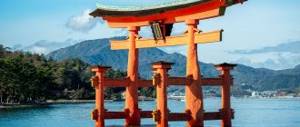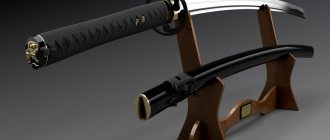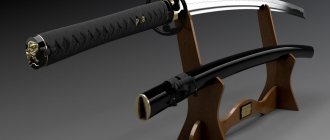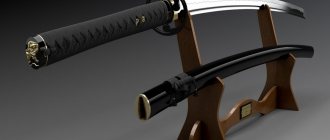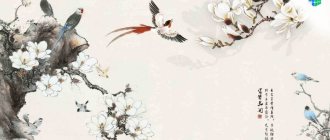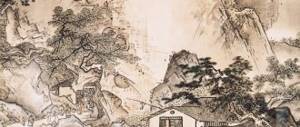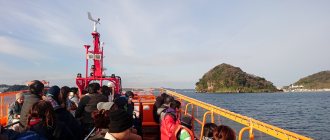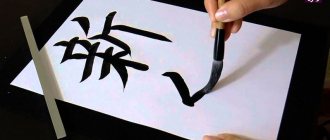Ise is one of the holiest places in Japan, a Shinto sacred center. For 2000 years, the temple was a place of worship for the goddess Amaterasu. The temple complex is to this day the largest center of pilgrimage and a place of visit.aaa
Ise temples are located in an amazingly beautiful national park, quiet, spacious, harmonious. According to legend, at the beginning of the first millennium, Emperor Suinin asked his daughter to find a place to build a temple to the sun goddess Amaterasu (before that she was revered at the imperial residence in Yamato), and after a long search this wooded area was chosen. Smooth and slender cryptomeria and cypress trees grow here, their trunks reaching far into the air and creating a feeling of grandeur and solemnity. You can walk endlessly along the smooth alleys connecting the buildings of the temple complex, reflecting on the ancient religious beliefs of the Japanese. This place seems to have been created for a Shinto shrine, because the deities of the Shinto pantheon control the forces of the sun, wind, water and are themselves part of nature, so their habitat should be as close to it as possible.
From the 7th to the 14th centuries, the sanctuary was led by High Priestesses from the Japanese imperial house. According to the chronicle of Manyoshu, the first priestess was Princess Okunohime-miko, daughter of Emperor Tenmu during the Asuka period (538-701). Priestesses in Ise are also mentioned in the classic works Genji Monogatari and Ise Monogatari.
Main attractions
Ise city
Ise (伊勢市) is a small city located in a picturesque area about 300 km from Tokyo on the Pacific coast. It is surrounded by Ise National Park, which spreads over 520 hectares. The city is a major center of tourism and pilgrimage.
The population is 132,351 people (2009), the city covers an area of 208.53 km2.
Ise Jingu Temple (伊勢神宮)
From Ise-jingu, the ancient Kumano-kodo pilgrimage trail departs to the Shinto shrines of Kumano-Hongu-taisha (熊野本宮大社), Kumano-Hayatama-taisha (熊野速玉大社) and Kumano-Nachi-taisha (熊野那智大社) .
Ise temples are divided into two groups: Naiku (内宮, inner temple) and Geku (外宮, outer temple) . Geku is located in the central part and is the imperial temple, where the emperor performs the most important religious rites. It is dedicated to Toyouke no Omikami, the goddess of fertility.
The exact date of the founding of the temples is unknown, but it is assumed that Naiku has existed since the 4th century, and Geku - from the 5th century.
Naiku Shrine is located a few kilometers from Geku, south of Ise City. It contains two of the greatest treasures of the Japanese imperial throne: a mirror and a sword, which, according to legend, belonged to the goddess Amaterasu.
Naiku occupies a large area on the banks of the Isuzugawa River and its tributary, the river is used for the ritual purification of priests.
Geku and Nike are connected by a pilgrim path along which the Furuichi entertainment district was located. The high priest of the sanctuary must come from the imperial family.
Besides these temples, there are 123 more temple buildings scattered within a radius of 50 m around, 91 of them belong to Naik and 32 to Gek.
The temples consist of piles on which stand wooden structures made of cypress logs, covered with a thatched gable roof, along the ridge of which there are thick crossed beams.
The main temple is closed by a high wooden fence, access to the main sanctuary is limited - only high-ranking clergy and members of the imperial family are allowed to enter. The main shrine is surrounded by a total of four fences, and visitors can only see fragments of the roof. The entire complex is served by about one hundred clergy. Only the emperor and empress have the right to enter the main shrine.
Uji Bridge (宇治橋)
A 00-meter wooden bridge over the Isuzu River at the entrance to Naika. Like all Nike buildings, it is rebuilt every 20 years.
Temizushi (手水社)
A small wooden structure for ritual washing of hands and mouth as a symbolic cleansing before entering the temple. Behind it is the first torii gate.
Saikan (斎館) and Anzaisho (行在所)
Beyond the first torii gate are the Saikan Purification Hall and the Anzaisho Imperial Family Visitor Hall. At Saikan, priests perform ablutions before ritual ceremonies, free their thoughts from worldly worries and eat food cooked on the sacred fire.
Kaguraden (神楽殿)
The special prayer hall is located at the second torii gate and is open to visitors to offer prayers to the kami, make donations, and purchase talismans and amulets.
Imibiyaden (忌火屋殿)
This shrine houses a sacred fire that is used to cook food to offer to the kami of Ise shrines. Rice and other offerings are placed in a Japanese cypress box, then cleaned in Haraedo directly opposite the Imibiyaden.
Kotaijingu (皇大神宮) is the main temple.
The pilgrimage trail now approaches the main Naiku temple, which is closed to visitors, but one can approach the gate to offer prayers.
At Kotaijingu there is a sacred mirror, one of the three imperial relics. From the path along the fence you can see the upper part of the temple, as well as the open space where the next temple will be located after the transfer ceremony. Main temple
The main pilgrimage trail leading to Geku is called Daiichi-torii-guchi-sando, it starts from the Hiyokebashi Bridge, beyond it is Temizusha, and then, as in Naiku, you can see Saikan, Anzaisho and Kaguraden.
On the north side there is also another path leading to Gek: Kitamikado-guchi-sando.
The main temple, Toyoukedaijingu, as well as Kotai-jingu, can only be approached up to the first torii gate.
Other attractions
Oharai machi (おはらい町)
A small street between the expensive entrance to Nike with antique-style buildings and numerous souvenir shops.
Okage yoko-cho (おかげ横丁)
A street branching off from Oharai Machi with numerous restaurants and taiko drum performances.
Both streets are extremely popular among tourists.
Married Stones Meoto Iwa (夫婦岩)
Located at Futami Okitama Shrine. The stones are considered sacred embodiments of the kami Izanami and Izanagi, and are tied with a shimenawa rice straw rope to symbolize their marriage.
Mountain Road Ise-Shima Skyline
A mountain road with beautiful views between Ise and Toba, 16.3 km long. Entry fee: 1200 yen for a car, 860 yen for a motorcycle.
Mount Asama (朝熊山)
The highest mountain in Ise, 555 m, with a panoramic platform, which can be reached from the Ise-Shima Skyline mountain road or climbed on foot from Asama Station.
Kongosho Temple (金剛證寺)
Buddhist temple on top of Mount Asama.
Park on the banks of the Miya River (宮川堤公園)
A famous place for sakura viewing, especially popular in April. There are fireworks displays in July. Located on the eastern side of the Mia River next to the Watarai Bridge.
Azuchi-Momoyama Amusement Park (安土桃山文化村)
An amusement theme park with samurai, ninjas and a haunted house. Located in Futami.
Kawasaki
A series of buildings reproducing the architecture of the ancient merchant quarters in Ise. Located along the Seta River north of Ujiyamada Station.
Ise Museums
Museums of the temple complex
Ise Jingu Jingu Chōkokan Historical Museum (神宮徴古館)
The Historical Museum of the temple complex contains materials related to the history of the sanctuary, models, ancient offerings to deities, objects of fine and applied art.
Opening hours: 9:00-16:30
The museum is closed on Mondays and from December 29 to 31
Jingu Nogyokan Agricultural Museum (神宮農業間)
The museum is the oldest agricultural museum in Japan and is dedicated to food production and the role of the deity Toyouke no Omikami in it. Historical documents and materials date mainly to the Meiji period.
Opening hours: 9:00-16:30
The museum is closed on Mondays and in December
Jingu Bijutsukan Fine Art Museum (神宮美術館)
The museum was created in 1993 in honor of the 61st Shikinen Sengu ceremony. It displays works by contemporary artists who dedicated their works to the temple and deities.
Opening hours: 9:00-16:30
The museum is closed on Mondays and from December 29 to 31
Ise Library Jingu Jingu bunko (神宮文庫)
The library was created to allow clerics to study Ise's religious history and culture, but is also open to the general public. Contains approximately 260,000 volumes. In front of the library is the Black Gate, which used to be the entrance to the house of the cleric Fukushima Misakidaya.
Opening hours: 9:00-16:00
The library is open on Thursdays, Fridays and Saturdays, closed on national holidays and at the end of the year.
Other museums
Ise Street History Museum Furuichi Sangu Kaido (伊勢古市参宮街道資料館)
Opening hours: 9:00-16:00
Closed on Monday
the entrance is free
10 minutes walk from Ise-shi Station
Shoha Museum (小坡美術館)
The museum contains works by Ito Shoha (daughter of the priest of the Sarutahiko Jinja Temple), mainly watercolors of ladies from the medieval period.
Bus stop Sarutahiko-jinja-mae 猿田彦神社前
Opening hours: 9:00~16:30
Admission: 300 yen adults, 100-200 yen students
Yamaguchi Seishi and Tokuriki Tomikichiro Museum (山口誓子・徳力富吉郎記念館)
The museum is dedicated to the poet Yamagachi Seishi and the artist Tokuriki Tomikichiro, who dedicated their works to the Ise Shrine.
Opening hours: April-September 9:30~18:00
October-March 9:30~17:00
the entrance is free
2 min walk from Jingu kaikan-mae stop
Okage-za (おかげ座)
A museum that contains materials about pilgrimages to the Edo-era Ise temples (Okage-mairi), where you can understand the depth of religious feeling of pilgrims 300 years ago.
Admission 300 yen for adults, 100 yen for children
Opening hours: April-September 9:30~17:30
October-March 10:00~16:30
2 min walk from Jingu Kaikan-mae Bus Stop (神宮会館前)
Ise-shi Art Corner
Here you can learn about the production of lacquerware and watch the manufacturing process.
Opening hours: 9:30 – 17:00
Closed on Tuesdays
You can get there by bus from Ise-shi station to Kawasaki hyakugo-mae stop (河崎百五前)
Ise-shi Ethnographic Museum (伊勢市立郷土資料館)
The museum contains historical, archaeological materials and folk items that tell about the life and everyday life of the city of Ise.
Opening hours: April-September 9:00 – 16:30
October-March 9:00 – 16:00
Admission: 100 yen adults, 80 yen children
You need to take a bus from Ise-shi station to San-jo-mae stop (三条前)
Kongoji Temple Treasury Museum (金剛證寺宝物館)
The museum displays Heian era mirrors, sutras and other written materials.
Opening hours: 9:00 – 16:00
Admission 500 yen adults, students 100-400 yen
You need to take two buses to the Sanchokoen stop (山頂広苑)
Story
Now the temple is divided into two complexes - the inner sanctuary of Naiku, which was built in honor of the goddess Amaterasu, and the outer shrine of Geku, created in honor of the goddess of food Okunitama. In ancient times, they were located inside the imperial palace, and followed the emperor when he changed residence.
This tradition was broken in the 4th century by Emperor Sujin. He ordered the shrines to be moved to a village not far from his palace. Then his government was changed by Emperor Suinin, who ordered his princess to determine a permanent location for the shrines.
The story goes that the sun goddess herself contacted the princess in Ise and told her where it was necessary to build a temple. Then Amaterasu ordered the construction of a shrine to Toeuke for her cook. Over time, buildings for horses and roosters of the goddess were created in the temple complex. Near the sanctuary there is a vegetable garden where vegetables are grown. They are used to prepare food for the deity.
The fascinating history and mystery of the temple attracts tourists to look at the sanctuary even from afar. The journey promises to be interesting and exciting. Harmony with nature promotes mental relaxation.
Ise City Tourist Association Events
Free tours of Ise
In Ise, you can book a free city tour, Nike and Geku from 9:30 to 15:00.
Reservations must be made at least a week in advance by letter, email or telephone through the Ise Tourism Association.
In Ise you can take part in master classes in cooking, basket weaving, ceramics making, you can also fish, river rafting and stay in tents. All of these activities require advance reservations through the Ise Tourism Association.
Ise City Tourism Association:
Email address Phone: (+81)596-23-9655
Address: Ise City Tourist Information Office c/o Kintetsu Line Ujiyamada Station
2-1-43 Iwabuchi, Ise-city Japan 516-0037
If you wish, you can also go to the Kintetsu Kashikojima Terminus Station and take a boat trip along Toba and Agowan Bays for approximately 1,500 yen.
Planning your travel expenses
For centuries, pilgrims went to Ise-jingu, encouraged by wandering Axis missionaries. Venerable masters traveled from region to region during the Edo period (1603-1868) and, like modern traveling salesmen, not only taught the benefits of making a pilgrimage to the shrine, but also helped arrange accommodation and guide services.
At the same time, associations (kyo) emerged in towns and villages to raise funds for travel. All participants made contributions and annually determined by lot who would go on the pilgrimage. Due to the specifics of this model of distribution of funds, the main task of the pilgrims was to deliver as many souvenirs as possible for those who were unlucky with the lot. The oshi and kyo systems ensured a constant flow of visitors to Ise-jing and were subsequently used for other sacred sites.
Special attention
- When visiting the Ise Shrine, you need to follow a certain order: first Geku then Nike. The most convenient way to get to Geku is from Iseshi Station (Kintetsu Railway and JR lines). From the station - just 5 minutes on foot. You can either walk to the next temple (50 minutes) or take a direct express bus in 10 minutes.
- Ise hosts many festivals, but the most prominent event is the regular renovation of the temple. It is held every 20 years, and the location of construction changes. Interestingly, this tradition has been around for many centuries. The next one, the 63rd, is planned for 2033.
Interesting information
- According to legend, the temple was founded about 2000 years ago by Yamatohime no Mikoto at the behest of the goddess Amaterasu herself. However, the forests around the temple were also considered sacred. They remain so today.
- From the 7th to the 14th centuries, the role of the high priestess of the temple was performed by girls from the imperial family. Now the tradition has been restored, the priests and priestesses come from among the relatives of the emperor or their descendants.
- On the temple grounds you can find roosters, which are revered as Amaterasu birds.
